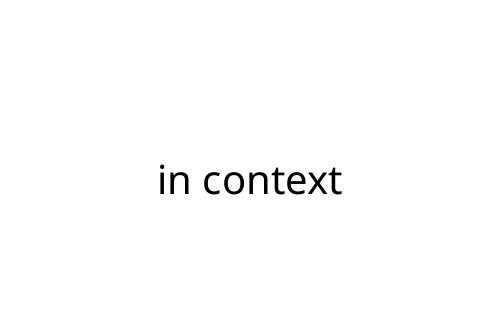in context
Understanding something "in context" is a crucial skill for anyone navigating complex information, whether you’re reading news, learning a new topic, or working on a project. Without proper context, facts become fragmented and can easily be misunderstood. In this article, we’ll unpack what it means to put things in context, why it matters, and how to develop a habit of contextual thinking.
What Does "In Context" Mean?
To view something “in context” is to consider the surrounding circumstances, background, or environment in which it exists. Instead of looking at isolated facts or statements, you look at the bigger picture. This usually leads to a clearer and more accurate understanding.
For example, a quote taken out of context might sound harsh or misleading. But when you read the sentences before and after, the meaning often changes. The same applies in work, relationships, history, and problem-solving.
Why Context Matters
Misunderstandings often happen when the context is ignored. Here are a few reasons why paying attention to context is essential:
- Accuracy: Facts alone can be misleading if not rooted in their original background.
- Nuance: Context adds the shades of grey that make communication precise.
- Decision-making: Good decisions come from understanding the whole situation, not just a sliver of it.
In digital communication, for example, seeing only a snippet of a chat or email can lead to flawed judgments. In education, learning facts “in context” helps with retention and application, not just rote memorization.
Practical Tips for Staying In Context
Building the habit of contextual awareness is valuable. Here are some direct ways to get better at it:
Ask More Questions
Whenever you encounter a statement or a problem, ask yourself:
- What happened before this?
- What is the bigger picture?
- Who is involved and why?
Read Beyond the Headline
News, research, and data can look different when you read the full article or examine the methodology. Headlines are designed to attract attention, but the real story is often in the details.
Seek Multiple Sources
Relying only on one viewpoint can limit your understanding. Comparing perspectives can reveal how context shapes truth.
Pause Before Reacting
Immediate reactions are often based on limited information. Before you commit to an opinion or action, wait until you have more context.
Common Pitfalls
Not staying “in context” leads to several common pitfalls:
- Jumping to conclusions: Quick judgments without all the facts.
- Misinformation: Misreading or resharing information that’s incomplete.
- Miscommunication: Explaining or presenting information poorly to others.
Conclusion
Learning to put things in context doesn’t require special talent — just a consistent effort to look beyond the obvious. Whether you’re reading, listening, or deciding, taking a moment to seek out context leads to more accurate, nuanced, and informed outcomes. The next time you find yourself puzzled or provoked, remember to step back and check: are you seeing the whole picture, or just a piece? Context makes all the difference.


 Waynes Tyrrellers
Unique Author
Waynes Tyrrellers is Bet Wise Daily’s unique author, known for his distinctive approach to gambling content. With a flair for storytelling and a knack for uncovering hidden angles in the industry, Waynes brings a fresh perspective to the site. His articles often delve into the cultural and psychological aspects of gambling, offering readers a deeper understanding of the game's impact on individuals and society. Waynes’ creative and analytical skills set him apart, making his contributions both entertaining and enlightening.
Waynes Tyrrellers
Unique Author
Waynes Tyrrellers is Bet Wise Daily’s unique author, known for his distinctive approach to gambling content. With a flair for storytelling and a knack for uncovering hidden angles in the industry, Waynes brings a fresh perspective to the site. His articles often delve into the cultural and psychological aspects of gambling, offering readers a deeper understanding of the game's impact on individuals and society. Waynes’ creative and analytical skills set him apart, making his contributions both entertaining and enlightening.
